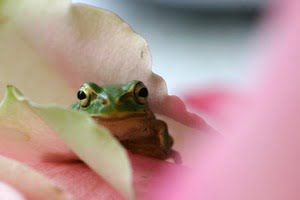I have taught my two older children to write haiku poems. The other day when my 6-year-old was clapping out syllables, I realized that she was ready to learn as well. I plan to do more than just teach my daughter how to write a haiku. I intend to use the haiku as a tool to have fun, learn and create. Find out more about the haiku, as well as seven reasons why you should teach your child to write one too.
Although the haiku originated in Japan, it is now a popular form or poetry in the United States. Haiku poems are short and sweet, making them fun and fairly simple to write. Children of all ages can learn many things by writing a haiku. There are many ways that this type of poetry can be fun as well.
A haiku paints a picture with words, is based on nature, and does not rhyme. The first line has 5 syllables, the second has 7, and the third has 5, making the entire poem 17 syllables long. You can read my poem called “A Haiku About How to Write a Haiku” for a visual. A seasonal word, called a kigo, should be added so the reader knows if the story takes place in the summer, fall, winter, or spring. The seasonal word is traditionally a nature word, such as beach, pumpkins, icicles, or frogs. Still, the nature word is not always crystal clear, and you can decide how traditional you want your haiku to be since you are the poet, and the poem is your creation. Traditionally, a haiku also has a colon, semicolon or dash at the end of lines one or two to divide a change in mood. In addition, present tense verbs are supposed to be used.
The following are seven reasons you should teach your child to write haiku poems.
1. Haiku poems teach kids about syllables
Haikus are a fun way for kids to learn about and become more familiar with syllables. I like the clapping method for teaching syllables because it allows children to easily divide each word. Once kids get the hang of writing haikus, syllables will become second nature to them.
2. Haiku poetry teaches kids about seasons and nature
As children write haikus, they will get a better understanding of seasons and nature, as well as how they relate to one another.
3. Haiku poems are fun to write together
Parents and children can take turns sharing their haiku poetry with each other. This is a fun way to spend quality time with your child.
4. Expand your child’s vocabulary by using a thesaurus
When writing a haiku, a thesaurus can be helpful, especially since the entire poem can only be 17 syllables long. Keeping an online thesaurus open is a great way to expand your child’s vocabulary.
5. Children can make their own haiku book
Children will enjoy getting a special journal to keep all their haiku poetry in. In addition, they will take pride in having a collection of their own haikus. It will be fun to look over older poems as time goes by, so be sure to date each one.
6. Writing, fun and guessing combine with the “What Am I?” haiku
A “What Am I?” haiku can be a fun way to spend time with your child. They will also enjoy this poetry game with friends or siblings. Kids enjoy guessing games, and this type of haiku is a riddle and poem in one. To write a “What Am I? Haiku, describe an animal or something else in nature, and follow the 5,7,5 syllable rule.
7. Kids will enjoy creating a picture to go with their haiku
Break out the markers, crayons, colored pencils, or paint and let your child create artwork to go along with their poetry. The haiku can be written on the artwork, and children can sign their work like a real artist and poet. These poetic painting can be framed. Once framed, they can be used to decorate the house or given out as gifts.
When writing a haiku, kids get a little history, language arts and science. Add some riddle and artwork fun, and you have a well-rounded poem that children of all ages will enjoy.
More by Rebecca Bardelli:
Memorable Valentine’s Day Gifts for Kids
Children Enjoy Valentine’s Day, but Do They Understand Love?
Six Things to Teach Children About Beauty



